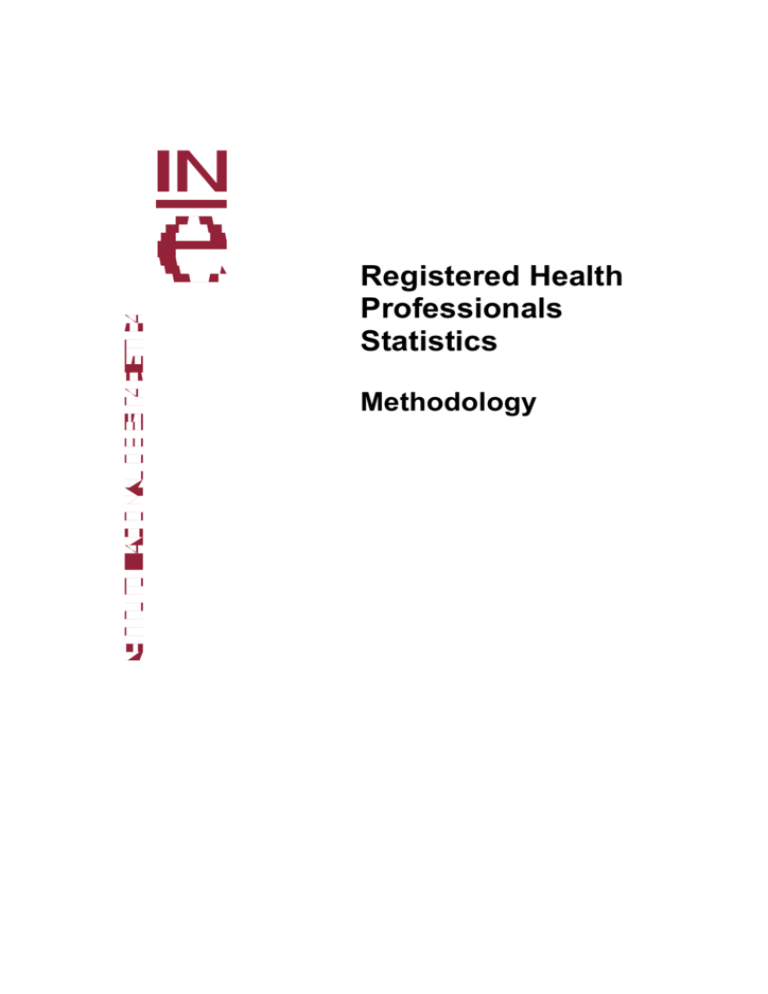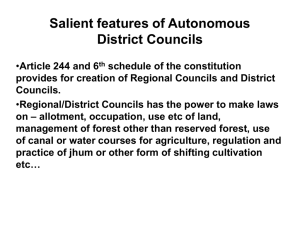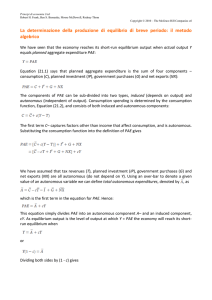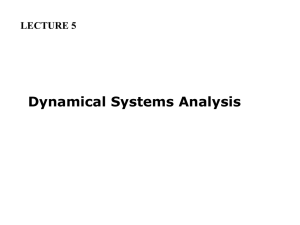Registered Health Professionals Statistics Methodology I
advertisement

Registered Health Professionals Statistics Methodology I Background The Registered Health Professionals Statistics have been compiled uninterrupted in the National Statistics Institute since the year 1953, and they collect the information on the registered professionals in the health sector. The importance of this characteristic lies in its requirement, for certain professional groups, in order to carry out their professional activity. Therefore, it provides key information for measuring the human resources that are eligible for working within the health system, and in fact, it is one of the key indicators required by international organisations (WHO, OECD, Eurostat) for including them in the assessment statistics of the health systems, together with the professionals who are practicing. The statistics have evolved as the concept of health professional has changed. The latest regulation corresponds to Law 44/2003, of 21 November, on Health Profession Planning, and it is using this regulation, when expanded to other Registers and Councils, that data is requested and the number of registered professionals is published. Modifications were also included in the questionnaires as of the year 2003, for the purpose of adapting the information to the requirements of different international organisations. II Objective The main objective is to ascertain the number of Health Professionals in a registered situation in Spain, according to the different health profession Councils and Associations. Moreover, the statistics must provide the structure by sex and age, and the geographical distribution of the group. III Scopes Territorial scope: the statistics include those registered professionals throughout the country. Time scope: the statistics are structural and annual. On analysing the number of registered professionals at a given moment (stock), the data refers to 31 December of the reference year. IV Variables The statistic compiles the professionals that are recognized as health professionals and that are registered in a professional association. It is considered as a health profession that under the Law 44/2003 of 21 November on Organization of Health Professions, or that meeting the established requirements. It is considered as a professional association those recognized by the Administration according to the Law 2/1974 of 13 February on Professional Associations. The objective variables are the number of registered professionals according to the following health professions: physicians, pharmacists, dentists, veterinarians, psychologists, physicists, chemists, nurses, physiotherapists, chiropodists, opticians and optometrists, dieticians and nutritionists, speech therapists, occupational therapists and dental technicians1. Among psychologists, physicists and chemists, only professionals with a health specialization are considered. (i) In the case of physicists, those with the specialization on Hospital Radiophysics are taken into account as health professionals. (ii) In the case of chemists, those with the specialization of Clinical Analysis, Clinical Biochemistry, Medical Genetics, Microbiology and Parasitology and Radiopharmacy are taken into account as health professionals. (iii) Psychologists with the specialization of Health are currently divided into four types: 1. Psychologists specialized on Clinical Psychology. 2. Psychologists belonging to the Spanish Army Medical Corps. 3. General Health Psychologists (degree/graduate studies + Masters on Health Psychology) 4. Psychologists meeting the following requirements (which allow to conduct health activities and to register their consults as health care centres): i. To have completed the degree/graduate studies, following a qualified educational path due to its relation with the education area of Personality, Evaluation and Psychological Treatment, or with the Clinical and Health Psychology. ii. To have acquired a supplementary postgraduate education not under 400 hours (or its equivalent in European credits), 100 of which will have a practical approach, related to the areas above mentioned. Data is also obtained on qualified nurses, with the Obstetrics-Gynaecology speciality (Midwife). In addition, this obtains the derived variable of the rates of registered professionals per 100,000 inhabitants. The classification variables are sex and age, labour situation and geographical distribution of registration (province and Autonomous Community)2. There are two types of labour situation: Retired and not Retired. Those professionals retired from work for turning the age specified by law or for illness that get the corresponding pension are considered Retired (retirement is an 1 Currently, the statistics are in the process of expanding to other professionals recognised in the scope of Law 44/2003. The requirements to include in this statistic are that they have a General Council configured that represents the profession, and that it be possible to obtain the basic information on the number of registered professionals at 31 December in each territorial Association or Council. 2 The tables of chemists are published referring to the Official Association of registration. administrative act by which an economically active person goes into a passive situation or becomes economically inactive). In the rest of the cases, registered professionals are considered not Retired. V Collection and treatment of the information Respondent units The respondent units are the Provincial Associations or General Councils, depending on the type of health professional. 1.- Physicians and Qualified Nurses, Dentists and Physiotherapists: the INE obtains directly the information regarding these professionals via the Associations belonging to the Province or to the Autonomous Community. 2.- Pharmacists, Veterinarians, Psychologists, Physicians, Chiropodists, Opticians and Optometrists, Chemists, Speech Therapists and Occupational Therapists: the unit to which the information is requested is the General Council of each one of the health professionals that coordinate and/or represent all of the territorial Associations or Councils in which the respective profession is divided 3. 3.- Dental technicians and Dieticians and Nutritionists: for these professions a mixed compilation system is carried out, in some of the Autonomous Communities the Association of the Autonomous Community informs directly and the General Council informs to the rest of the Autonomous Communities. The directory with all of the respondent units is updated each year, at the time of statistic collection. Questionnaires The information is collected through a web application (IRIA) where the aggregated data is requested on the number of registered professionals distributed according to the classification variables. Data is collected from 2 January of the reference year. The questionnaires are adapted to each one of the professionals. There are two types of questionnaire: 1. General Councils of Professional Associations: Pharmacists, Veterinarians, Chiropodists, Physicists, Opticians and Optometrists, Psychologists, Dental Technicians, Chemists, Dieticians and Nutritionists, Speech Therapists and Occupational Therapists. 2. Associations of Physicians, Qualified Nurses, Dentists Physiotherapists, Dental Technicians and Dieticians and Nutritionists belonging to the Province and to the Autonomous Community. 3 The Councils currently targeted by the statistics are the following: General Council of Pharmaceutical Associations, General Council of Veterinary Associations, General Council of Official Chiropodist Associations, General Council of Colleges of Opticians-Optometrists, Official College of Physicists, General Council of Colleges of Psychologists, General Council of Official Colleges of Chemists, General Council of Official Colleges of Dieticians and Nutritionists, General Council of Official Colleges of Speech Therapists and Official College of Occupational Therapists. Data processing The web application detects inconsistencies and includes some warnings that enable carrying out a first information quality control when the respondent unit fills it out. The Central Services, as the information is received, verifies the coherence of the data and compares it with the previous data series. In case of anomalies, direct contact is made with the unit in order to confirm the data with the General Councils of Colleges in order to corroborate the information. VI Publication of results Once the consistency of the information provided in the questionnaires is verified, a press release is published as well as the data on a national level, by Autonomous Community and Autonomous City, and by province. Both the tables and the press release are disseminated via the INE website (INEBase), in the chapter on Health Statistics. 86 tables are published, divided by type of healthcare professional. Each type of health professional may have the following tables: 1 Registered health professionals, by years and sex. 2 Number of collegiates by Autonomous Community or Autonomous City, and by Province of registration, age and sex. 3 Distribution of the number of collegiates by Autonomous Community or Autonomous City of registration, age and sex. 4 Number of collegiates by Autonomous Community or Autonomous City of registration, labour situation and sex. 5 Distribution of the number of collegiates by Autonomous Community or Autonomous City of registration, labour situation and sex. 6 Rate of registered health professionals per 100,000 inhabitants, by Autonomous Community or Autonomous City of registration and labour situation4. In the case of Qualified Nurses, the Obstetrics-Gynaecology (Midwife) speciality is published, and as information on the remaining specialities is made available, new tables will be incorporated. 4 The population used to calculate the rates is the Flash Estimation of the Population as of 1 January. In the specific case of the Obstetrics-Gynaecology (Midwife) specialisation, women of child-bearing age were the population used.







